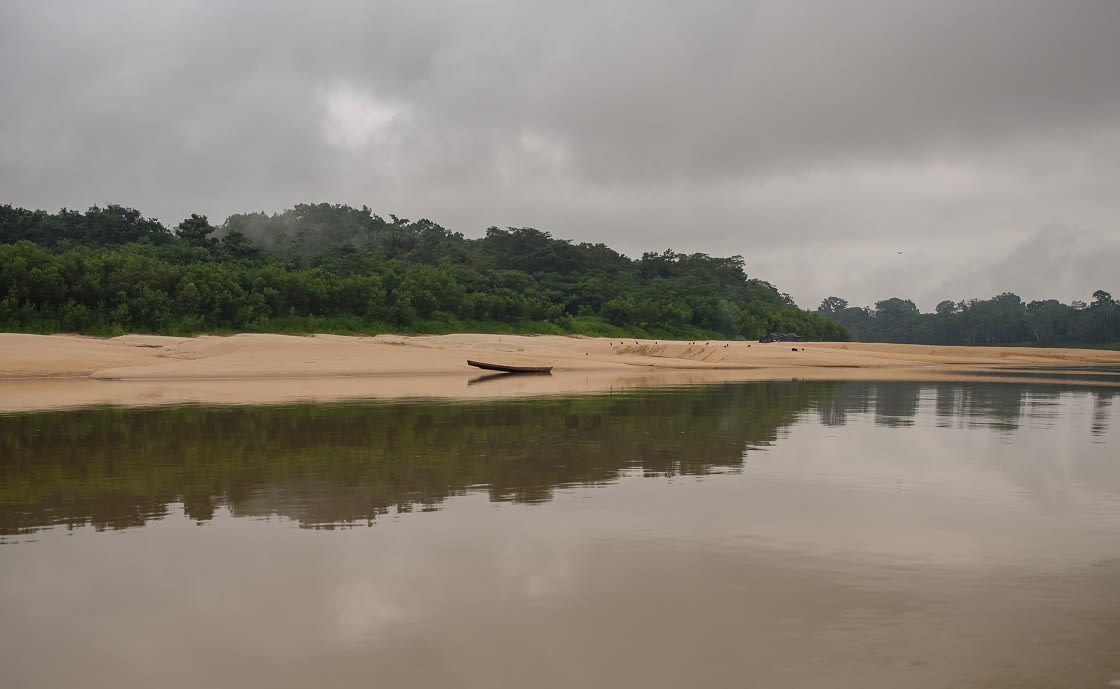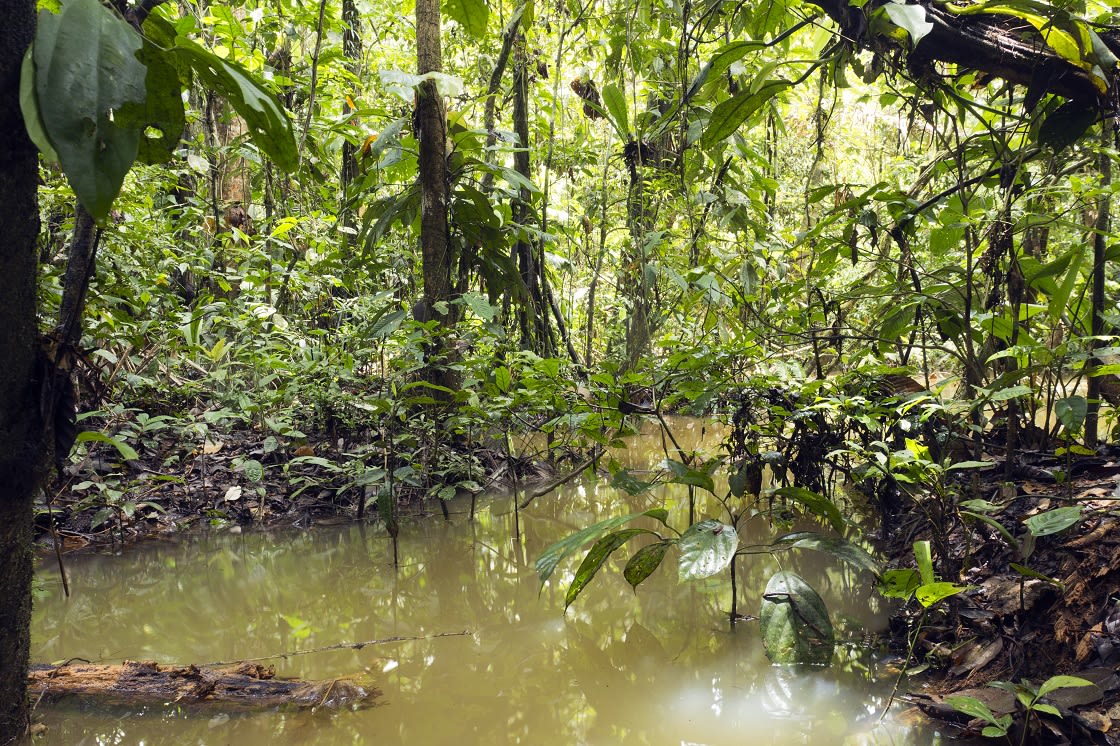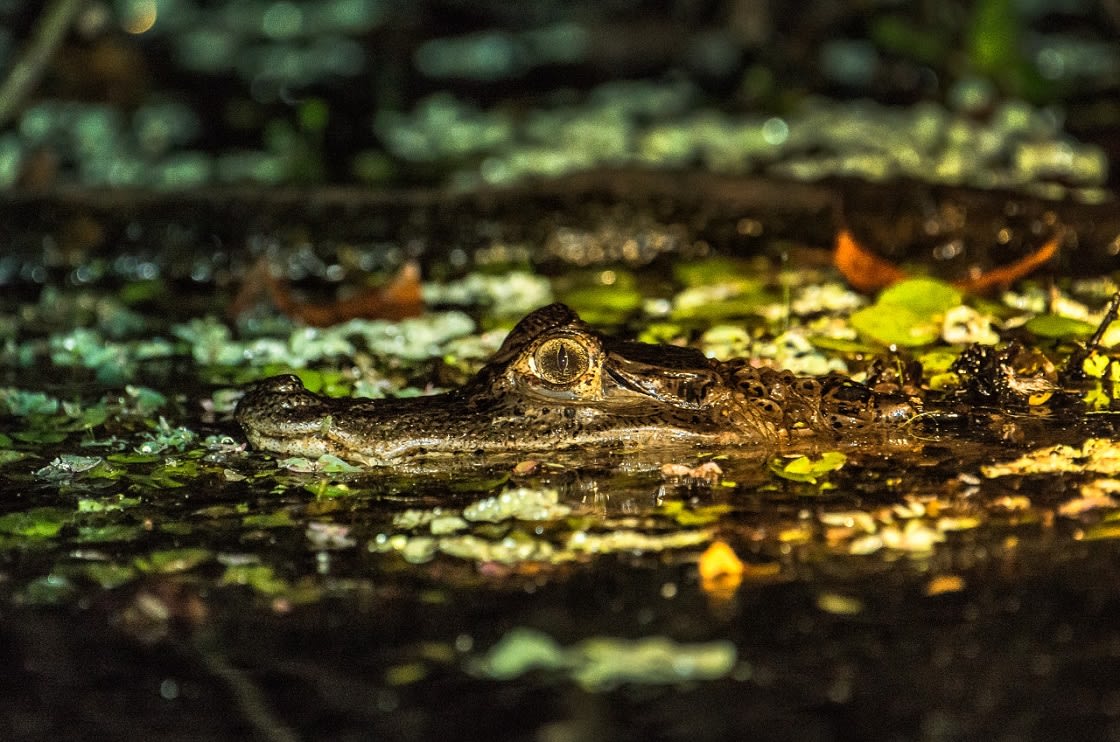
If you are planning an Amazon vacation in Brazil, Peru, Ecuador, or Bolivia, you will no doubt be wanting to know what the weather is going to be like, and when would be the best time of year to visit the Amazon, maybe to avoid the rain or to increase your chances of spotting wildlife.
Unfortunately, there is never any guarantee you will avoid the rain. In fact, along with generally hot and humid weather, rain is pretty much a staple of the climate in the Amazon Rainforest, with 12ft (4m) of rainfall a year on average. That equates to approximately 200 rainy days, which means that there will be days of heavy rain no matter when you visit.
But don’t bemoan it too much; it is thanks to this moisture, combined with intense sunlight, that the Amazon is such a fertile place and can boast such an abundance of wildlife. Despite being characterized by this tropical climate of rain, humidity, and heat – it is within two degrees of the Equator after all – it’s fair to say that there are slight variations in the yearly climate of the Amazon.
In all parts of the Amazon, there are two seasons: the so-called wet (or rainy) season and the dry season. Despite the nomenclature, only a little more than half (60%) of the total rainfall occurs during the wet season, and it is hot in the Amazon any time of year, but nominally cooler during the wet season, with average temperatures of 86°F (30°C) compared to the dry season’s 98°F (37°C).
When the wet and dry seasons in the Amazon Rainforest are – and subsequently when the best time to visit the Amazon is – very much depends on which part of the Amazon you are in:

Sandy Amazon Beach During The Low Water Season
In Brazil, the rainy season roughly runs from mid-December to mid-May. This time of year brings heavier winds, which cause increased rainfall around the central Amazon. Manaus’ main river, the Rio Negro, is the largest blackwater river in the world, as well as being the largest tributary of the Amazon, and can flood when there is a lot of rain in the region.
The rest of the year (June to December) is considered the dry season. Average temperatures in the Brazilian Amazon range from roughly 85 – 95°F (29 – 35°C), with night times dropping up to ten degrees in heat.

Flooded “Pool” In The Ecuadorian Amazon
The Ecuadorian Amazon is similarly rainy and humid. The rainy season tends to occur from March through to July, with August through December being extremely changeable. January to March are the driest months of the year. Average temperatures in the Ecuadorian Amazon are similar to Brazil.

Water Marks On The Trees Tell Us About The Previous Water Levels In The River
The Peruvian Amazon, much like its Ecuadorian relative, is also warm and rainy. The driest season takes place during the months from May to October, with November through to April being the wetter season, offering a high chance of precipitation. Roughly 80% of the area’s rainfall comes during these months. It is also the time of year that is the coldest, with lows of around 62°F (17°C), although there can be highs of over 90°F (32°C). There are occasional days where temperatures can drop all the way down to 45°F (7°C), so come prepared for all weather.
Iquitos, the gateway city to the Amazon in Peru, regularly has microclimates, meaning, rain can be present in one area of the city, and sunshine in another. Lastly, Iquitos suffers from a phenomenon called “urban heat island.” It’s where heat has difficulty dissipating into the night hours, since the urban climate of Iquitos, is hotter than the natural climate of the Amazon jungle.
The Bolivian Amazon is very similar to the Peruvian, with April to September considered the dry months. The Bolivian Amazon is, however, perhaps the most volatile of the micro-climates and can offer up a surprisingly sunny day during the rainy season, or a torrential downpour during drier times. Again, like in Peru, it is worth your while coming prepared for any type of weather.
Ultimately, the best time of year to visit the Amazon Rainforest comes down to two factors: the section of the Amazon you are visiting, and your preference of wet or dry season. If you are considering an Amazon lodge stay, your itineraries are likely to be less affected by the season, but if you are thinking of taking an Amazon river cruise it is important to understand that itineraries may differ by season due to a change in water levels affecting accessibility to certain areas.
The rainy season brings with it an abundance of advantages for cruising. Perhaps most important, the rivers and streams are about 23 feet (7 meters) higher, meaning that every river, creek, and lake is navigable. The river channels often overflow to create a fairytale ‘flooded forest’, a truly spectacular sight to behold. You will get to explore more of the waterways of Amazonia and will have access to plant life and wildlife areas that you might miss during the dry season.
The higher water levels will put you much closer to the jungle canopy, where monkeys play and beautiful Amazon birds like to roost. In fact, you are likely to see many more mammals, both monkeys, and others, during this ‘flooded’ or ‘high-water season. During the wet season many rare riverine plants also fruit and flower, making observation of birds and monkeys along the river’s edge a bit easier as they feast upon the abundance of tropical fruits and blooms.
Increased navigability by water has the flip side that areas to walk and hike are limited at this time, and if we do find usable hiking trails, there will be more mosquitoes than in the dry season. Fishing is more limited during these months too, as the fish are less concentrated making it harder to catch them.

Spectacled Caiman In The Pacaya Samiria Reserve, Peru
The dry season, on the other hand, brings its own unique wildlife and unveils the Amazon River’s beaches. A key difference is that trails and jungle paths that were flooded are now easily accessible, allowing groups to explore deep in the jungle by foot, accompanied by fewer mosquitoes than during the wet season.
The flip side of the drier conditions is lower water levels, which means many of the creeks and lakes become inaccessible by boat. Lower water levels, however, can be a bonus in other ways. During these months it is much easier to spot snakes and lizards, and fishing is much easier – you’ll do well not to catch a piranha! And while the lower river levels mean that you are farther from the birds that roost in the jungle canopy, you will have the chance to see dozens of species of migratory birds in flight, something you would completely miss during the wet season.
With the waters at their shallowest, fish concentrate in the shallows by the millions to spawn. During this period, fish attract every type of tropical fishing bird including storks and spoonbills. The Amazon’s crocodilian, caiman, becomes much more visible as they nest in the dry season, taking advantage of the abundance of fish. Pink river dolphins are also more likely to be spotted as they will be less spread out along the river.
If seeing our glorious flooded forest and getting close-up views of birds and mammals (and enjoying a slightly cooler temperature) sounds attractive, then the wet season might be the best choice. If jungle hikes, seeing exotic migratory birds perch on trees as they pass through Amazonia, still having the chance to see monkeys and other mammals, and going on great fishing expeditions top your list, you might be happier choosing the hotter, slightly less rainy, dry season.
Perhaps the best solution of all: choose a trip at a time that fits in with your schedule, and we are sure that you will like it so much that you will want to return to experience the other season in the Amazon as well. Whenever you decide to come to the Amazon Rainforest – and however wet you get – one thing is for sure: you’ll see spectacular flora and fauna and have the time of your life.
While Rainforest Cruises aim to provide accurate and up-to-date information, we make no representations as to the accuracy or completeness of any information herein or found by following any link on this site. Rainforest Cruises cannot and will not accept responsibility for any omissions or inaccuracies, or for any consequences arising therefrom, including any losses, injuries, or damages resulting from the display or use of this information.




